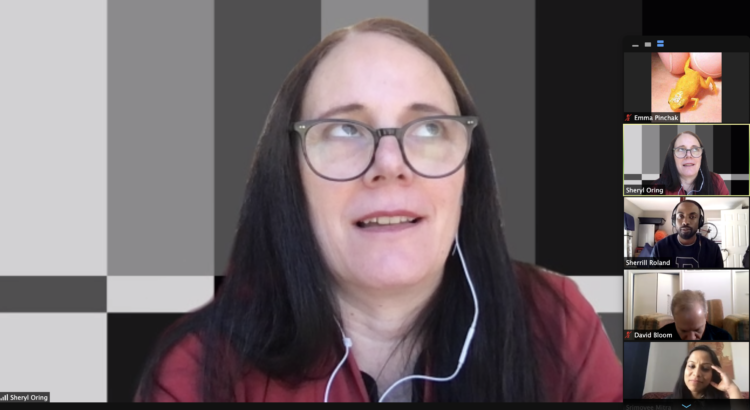While perhaps not as informative about their collaborative work as I had hoped, this discussion provided some valuable background and behind the scenes information on Oring and Roland’s individual projects.
Roland was more reserved in talking about The Jumpsuit Project than Oring about I Wish To Say, not surprising given the length of time Oring has spent developing and connecting with her work, which has required a different kind of personal conversation to its audience members. As Roland reflected, in-person commentary to his work has mostly involved either an effort to shape the design of the project (campus and local police, university faculty, professors) or a rather momentary response (students commenting on it while studying at the library, passersby snapping a quick photo). Starting as a thesis project for his MFA, it makes sense: he faced pressures to appeal to a great deal of people, or if not to appeal, then to specifically give a message to many, all at once. There were his thesis advisors, people on the street, people on his campus, the institution that had held him despite his innocence, the entire country’s network of incarceration and justice systems.
While also incredibly impactful, Oring’s project has something to say rather than something to prove. That’s an oversimplified statement, but it compares the current evolutionary state of the two projects in broad terms. Oring, in contrast, speaks to her audience one-on-one as well as peripheral members of her audience (observers by the typewriter stations, people reading about her work online), making space for the content of their letters in an overwhelmingly impersonal world. In the nearly two decades since she began the project (as well as her previous years as a journalist), she has honed her ability to speak simultaneously to an individual subject (an interviewee) and a wider audience (readers).
Both styles of performance art serve a purpose within the political moments in which they exist: Roland seeks to expose widespread flaws in the criminal justice system through bringing his own experience to many in a particularly conspicuous way, contrasting how systemic injustice is often kept away from the public eye. These systems are represented as old, unchangeable institutions central to the function of our society, despite the reality that prisons are an industry, a pipeline, a cyclical system with rehabilitation far from a main focus. Oring, by working one-and-one and over a long period, has allowed citizens to individually be vocal. It’s especially important as polarization and whipsawing between recent presidential administrations causes significant frustration and disillusionment amongst the public.
Future events put on by the Stamps Gallery can be found here, including episodes of the Penny Stamps speaker series and other talks with artists. There are also some upcoming gallery exhibitions as MFA students showcase their theses; do note that entrance into the gallery requires an Mcard.


